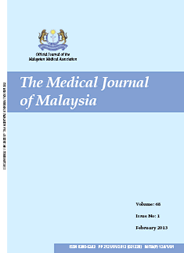MJM, Vol 70 Supplement 1 September 2015
Changing graphics of pictorial health warnings on cigarette
packages: Policy brief
*Institute for Public Health, Ministry of Health, Malaysia, **Institute for Medical Research, Ministry of Health, Malaysia, ***National Institute of Health, Ministry of Health, Malaysia
ABSTRACT
Introduction: The aim of this study was to examine the effectiveness of changing the graphics of the PHW on cigarette packages and its impact on reducing uptake and motivation to quit.
Method: The literature review undertaken was limited to all English papers published in the last 10 years. The search was performed in six major electronic databases (PubMed, Cochrane Library, EMBASE, ProQuest Hospital Collection, MEDLINE and OVID) using the key words “health warnings”, “smoking”, “smoking cessation”, "tobacco”, "health warning labels”, “graphic warnings", “health warning messages”, “packaging” and “labelling”. Two systematic reviews, 27 primary studies and one weekly report were selected.
Results: A systematic review revealed insufficient evidence to quantify the direct impact of having bigger size PHWs on smoking initiation, cessation and prevalence. However, a study in Canada reported that increasing the text size was associated with a quit rate of 11%. The study was supported by many other studies, which reported that PHW typically evoked more of an emotional response, increased memory and awareness of health risks, and reinforced motivations to quit smoking. A weekly report revealed that PHW is a powerful tool in tobacco control.
Conclusion: Many studies supported larger graphic health warning messages as the most effective method in communicating health risks. The results also indicated that colour and product descriptors were associated with false beliefs about risks. Future research should focus on finding the best content, design, and rotation strategies of PHW to maximise and sustain the influence of this cost-effective intervention.
Key words: pictorial health warnings, cigarette packaging, graphic, smoking
